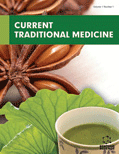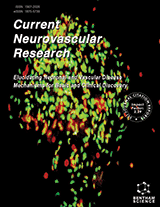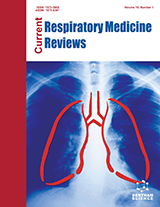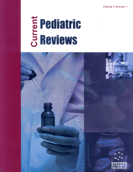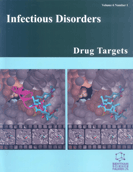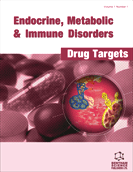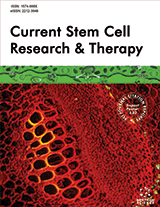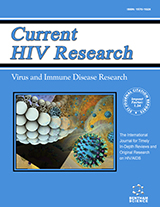Abstract
Background: Capparis decidua (Forssk.) Edgew. (Kareel) is a multifunctional perennial woody plant that belongs to the family Capparaceae, widely distributed in the hot arid regions of different parts of the world, especially in the Indian subcontinent, Africa and Saudi Arabia.
Objective: The review aims at presenting updated information with respect to ethnopharmacological relevance and recent findings on phytochemical and biological activities of Capparis decidua.
Methods: The literature survey was carried out with the help of various sources such as Scifinder, Pubmed, Scopus, Science Direct, and Google Scholar.
Results: Phytochemical review of the plant revealed the presence of mainly glycosides, alkaloids, flavonoids, terpenoids, volatile oils, fatty acids and steroids that possess immense pharmacological activities. The plant has been used traditionally as an expectorant, carminative, digestive, stimulant, antimicrobial, aphrodisiac, anodyne, anthelmintic and is also useful in ailments like cough, dropsy, dyspepsia, intermittent fever, asthma, intestinal worms, constipation, lumbago, odontalgia, amenorrhoea, dysmenorrhoea and cardiac disorders. Several pharmacological and biological activities using various parts of the plant have been reported like antidiabetic, antiparasitic, analgesic, hepatoprotective, anti-inflammatory, anti-rheumatic, anti-gout, in-vitro cytotoxicity activity, antihyperlipidemic, anti-atherosclerotic, antinephrolithiasis, anti-microbial and anti-fungal. Nutritionally, the fruits of the plant are used for preparing pickles and has also been used in food preparations since ancient times.
Conclusion: Even though the plant has numerous pharmacological properties, there are many secluded pharmacological activities of the plant which still need to be explored. Considering the importance of the plant in the pharmaceutical and nutritional area, the present review is an attempt to focus on up-to-date studies performed on the plant C. decidua, mainly concerning the phytochemical and pharmacological significance, which will benefit researchers having an interest in the relevant field.
Keywords: Capparis decidua, Kareel, Capparaceae, pharmacological activities, multifunctional.
Graphical Abstract
Current Traditional Medicine
Title:An Updated Overview of Ethnomedicinal Uses, Phytochemical and Various Pharmacological Evaluations on the Plant Capparis decidua (Forssk.) Edgew.
Volume: 7 Issue: 2
Author(s): Shalu Pal, Rupali S. Prasad, Satyendra K. Prasad, Ramesh K. Goyal and Mahaveer Dhobi*
Affiliation:
- School of Pharmaceutical Sciences, Delhi Pharmaceutical Sciences and Research University, Sector 3, Pushp Vihar, New Delhi, 110017,India
Keywords: Capparis decidua, Kareel, Capparaceae, pharmacological activities, multifunctional.
Abstract:
Background: Capparis decidua (Forssk.) Edgew. (Kareel) is a multifunctional perennial woody plant that belongs to the family Capparaceae, widely distributed in the hot arid regions of different parts of the world, especially in the Indian subcontinent, Africa and Saudi Arabia.
Objective: The review aims at presenting updated information with respect to ethnopharmacological relevance and recent findings on phytochemical and biological activities of Capparis decidua.
Methods: The literature survey was carried out with the help of various sources such as Scifinder, Pubmed, Scopus, Science Direct, and Google Scholar.
Results: Phytochemical review of the plant revealed the presence of mainly glycosides, alkaloids, flavonoids, terpenoids, volatile oils, fatty acids and steroids that possess immense pharmacological activities. The plant has been used traditionally as an expectorant, carminative, digestive, stimulant, antimicrobial, aphrodisiac, anodyne, anthelmintic and is also useful in ailments like cough, dropsy, dyspepsia, intermittent fever, asthma, intestinal worms, constipation, lumbago, odontalgia, amenorrhoea, dysmenorrhoea and cardiac disorders. Several pharmacological and biological activities using various parts of the plant have been reported like antidiabetic, antiparasitic, analgesic, hepatoprotective, anti-inflammatory, anti-rheumatic, anti-gout, in-vitro cytotoxicity activity, antihyperlipidemic, anti-atherosclerotic, antinephrolithiasis, anti-microbial and anti-fungal. Nutritionally, the fruits of the plant are used for preparing pickles and has also been used in food preparations since ancient times.
Conclusion: Even though the plant has numerous pharmacological properties, there are many secluded pharmacological activities of the plant which still need to be explored. Considering the importance of the plant in the pharmaceutical and nutritional area, the present review is an attempt to focus on up-to-date studies performed on the plant C. decidua, mainly concerning the phytochemical and pharmacological significance, which will benefit researchers having an interest in the relevant field.
Export Options
About this article
Cite this article as:
Pal Shalu , Prasad S. Rupali , Prasad K. Satyendra , Goyal K. Ramesh and Dhobi Mahaveer *, An Updated Overview of Ethnomedicinal Uses, Phytochemical and Various Pharmacological Evaluations on the Plant Capparis decidua (Forssk.) Edgew., Current Traditional Medicine 2021; 7 (2) . https://dx.doi.org/10.2174/2215083806666200128125407
| DOI https://dx.doi.org/10.2174/2215083806666200128125407 |
Print ISSN 2215-0838 |
| Publisher Name Bentham Science Publisher |
Online ISSN 2215-0846 |
 9
9
- Author Guidelines
- Bentham Author Support Services (BASS)
- Graphical Abstracts
- Fabricating and Stating False Information
- Research Misconduct
- Post Publication Discussions and Corrections
- Publishing Ethics and Rectitude
- Increase Visibility of Your Article
- Archiving Policies
- Peer Review Workflow
- Order Your Article Before Print
- Promote Your Article
- Manuscript Transfer Facility
- Editorial Policies
- Allegations from Whistleblowers
- Announcements
Related Articles
-
An Update on NLRP3 Inflammasome Activation by Engineered Nanomaterials
Current Bionanotechnology (Discontinued) Interleukin-21 in Immune and Allergic Diseases
Inflammation & Allergy - Drug Targets (Discontinued) Why are People with “Poor Lung Function” At Increased Atherothrombotic Risk?A Critical Review with Potential Therapeutic Indications
Current Vascular Pharmacology Poly (ADP-Ribose) Polymerase-1 (PARP-1) as Immune Regulator
Endocrine, Metabolic & Immune Disorders - Drug Targets Autophagy as a Molecular Target of Flavonoids Underlying their Protective Effects in Human Disease
Current Medicinal Chemistry A Common Biological Mechanism in Cancer and Alzheimers Disease?
Current Alzheimer Research Machine Learning in Discovery of New Antivirals and Optimization of Viral Infections Therapy
Current Medicinal Chemistry Pharmacogenetics and Pharmacotherapy of Military Personnel Suffering from Post-traumatic Stress Disorder
Current Neuropharmacology Anti-Inflammatory Drug Effects on Apoptosis of Eosinophil Granulocytes Derived from Murine Bone-Marrow: Cellular Mechanisms as Related to Lineage, Developmental Stage and Hemopoietic Environment
Anti-Inflammatory & Anti-Allergy Agents in Medicinal Chemistry Microarray: An Approach for Current Drug Targets
Current Drug Metabolism Mitochondrial Dysfunction and Antioxidant Therapy in Sepsis
Infectious Disorders - Drug Targets Tumor Growth-Promoting Properties of Macrophage Migration Inhibitory Factor
Current Pharmaceutical Design TFF (Trefoil Factor Family) Peptides and their Potential Roles for Differentiation Processes During Airway Remodeling
Current Medicinal Chemistry Multifaceted Approach to Circadian Rhythm: Redox, Oxidative Stress, Melatonin, Antioxidants, Nitric Oxide, Hypoxia, Anesthetics, Cortisol and Cocaine
Current Chemical Biology Regulative Role of Atomic Auto Correlated Electronegativities and Polarizabilities in β2 Potency of Ultralong Acting Agonists Identified in QSAR Studies
Current Bioinformatics Pharmacological Screening of Lantana camara for its Antiallergic Activity in Rodents
Clinical Anti-Inflammatory & Anti-Allergy Drugs (Discontinued) Association of Serum Malondialdehyde and C-reactive Protein Levels with Exacerbations of Chronic Obstructive Pulmonary Disease
Current Respiratory Medicine Reviews Medicinal Plants and Natural Products: More Effective and Safer Pharmacological Treatment for the Management of Obesity
Current Drug Metabolism Novel Strategies for the Treatment of Asthma
Recent Patents on Inflammation & Allergy Drug Discovery Evidence of Probiotics in Prevention of Allergy and Asthma
Current Drug Targets - Inflammation & Allergy


